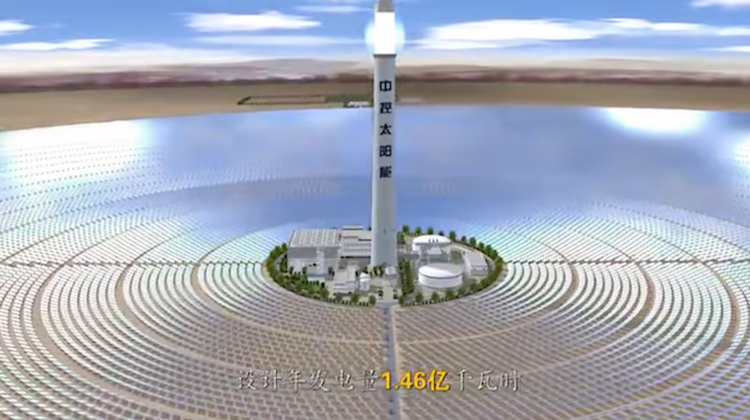
Sustainable Development Goals (SDGs) and the Progress of Concentrating Solar Power Technology

Abstract:
The deployment of power towers has significantly contributed to the reduction of the levelized cost of electricity (LCOE), a standard for economic assessment of electricity-producing technologies. The LCOE of Concentrated Solar Power (CSP) plants is projected to decrease to less than 0.05 USD/kWh in the near future. Figure 2 illustrates the LCOE of various plants from 2010 to 2017, as well as winning bid prices from auctions for the years 2017-2022. The LCOE has experienced a dramatic reduction from around 0.35 USD/kWh in 2017 to 0.22 USD/kWh in 2022, thanks to continuous advancements in CSP technology. However, further innovations are necessary to integrate these components into a comprehensive system that can meet peak load demands at low costs. Thermal energy storage (TES) offers an advantage in this regard, allowing smaller plants to provide peak load power while larger plants with longer storage hours can be deployed for baseload power [12]. Even large plants are now being developed for peak loads. The integration of TES in newer CSP plants enhances grid flexibility, making it a cost-competitive asset. This highlights the urgency to rapidly develop cost-effective technology, which is one of the driving forces behind CSP development and deployment. It is important to note that these price reductions are not solely attributed to competition, but also to technological improvements (see Figure 3).
Reference:
- Yerudkar, A. N., Kumar, D., Dalvi, V. H., Panse, S. V., Gaval, V. R., & Joshi, J. B. (2023). Economically feasible solutions in concentrating solar power technology specifically for heliostats – A review. Renewable and Sustainable Energy Reviews, 189, 113825. https://doi.org/10.1016/j.rser.2023.113825
SDGs, Targets, and Indicators
| SDGs | Targets | Indicators |
|---|---|---|
| SDG 7: Affordable and Clean Energy | 7.1 By 2030, ensure universal access to affordable, reliable, and modern energy services | – Levelized cost of electricity (LCOE) reduction in CSP plants – Winning bid prices from auctions for CSP plants |
| SDG 9: Industry, Innovation, and Infrastructure | 9.4 By 2030, upgrade infrastructure and retrofit industries to make them sustainable, with increased resource-use efficiency and greater adoption of clean and environmentally sound technologies and industrial processes | – Technological improvements in CSP plants – Innovations in using components in a holistic system for peak load demands |
| SDG 13: Climate Action | 13.2 Integrate climate change measures into national policies, strategies, and planning | – Reduction of LCOE in CSP plants as a result of technological improvements and competition |
1. Which SDGs are addressed or connected to the issues highlighted in the article?
The issues highlighted in the article are connected to SDG 7 (Affordable and Clean Energy), SDG 9 (Industry, Innovation, and Infrastructure), and SDG 13 (Climate Action).
2. What specific targets under those SDGs can be identified based on the article’s content?
Based on the article’s content, the specific targets under the identified SDGs are:
– SDG 7.1: By 2030, ensure universal access to affordable, reliable, and modern energy services.
– SDG 9.4: By 2030, upgrade infrastructure and retrofit industries to make them sustainable, with increased resource-use efficiency and greater adoption of clean and environmentally sound technologies and industrial processes.
– SDG 13.2: Integrate climate change measures into national policies, strategies, and planning.
3. Are there any indicators mentioned or implied in the article that can be used to measure progress towards the identified targets?
Yes, there are indicators mentioned or implied in the article that can be used to measure progress towards the identified targets. These indicators include:
– Levelized cost of electricity (LCOE) reduction in CSP plants: This indicates progress towards achieving affordable and clean energy (SDG 7.1).
– Winning bid prices from auctions for CSP plants: This reflects the competitiveness and cost-effectiveness of CSP technology, contributing to SDG 7.1.
– Technological improvements in CSP plants: This indicates progress towards upgrading infrastructure and adopting clean technologies (SDG 9.4).
– Innovations in using components in a holistic system for peak load demands: This reflects progress towards sustainable industry practices and resource-use efficiency (SDG 9.4).
– Reduction of LCOE in CSP plants as a result of technological improvements and competition: This demonstrates integration of climate change measures into national policies and strategies (SDG 13.2).
Therefore, these indicators can be used to measure progress towards the identified targets.
4. SDGs, Targets, and Indicators
| SDGs | Targets | Indicators |
|---|---|---|
| SDG 7: Affordable and Clean Energy | 7.1 By 2030, ensure universal access to affordable, reliable, and modern energy services | – Levelized cost of electricity (LCOE) reduction in CSP plants – Winning bid prices from auctions for CSP plants |
| SDG 9: Industry, Innovation, and Infrastructure | 9.4 By 2030, upgrade infrastructure and retrofit industries to make them sustainable, with increased resource-use efficiency and greater adoption of clean and environmentally sound technologies and industrial processes | – Technological improvements in CSP plants – Innovations in using components in a holistic system for peak load demands |
| SDG 13: Climate Action | 13.2 Integrate climate change measures into national policies, strategies, and planning | – Reduction of LCOE in CSP plants as a result of technological improvements and competition |
Behold! This splendid article springs forth from the wellspring of knowledge, shaped by a wondrous proprietary AI technology that delved into a vast ocean of data, illuminating the path towards the Sustainable Development Goals. Remember that all rights are reserved by SDG Investors LLC, empowering us to champion progress together.
Source: solarpaces.org

Join us, as fellow seekers of change, on a transformative journey at https://sdgtalks.ai/welcome, where you can become a member and actively contribute to shaping a brighter future.






